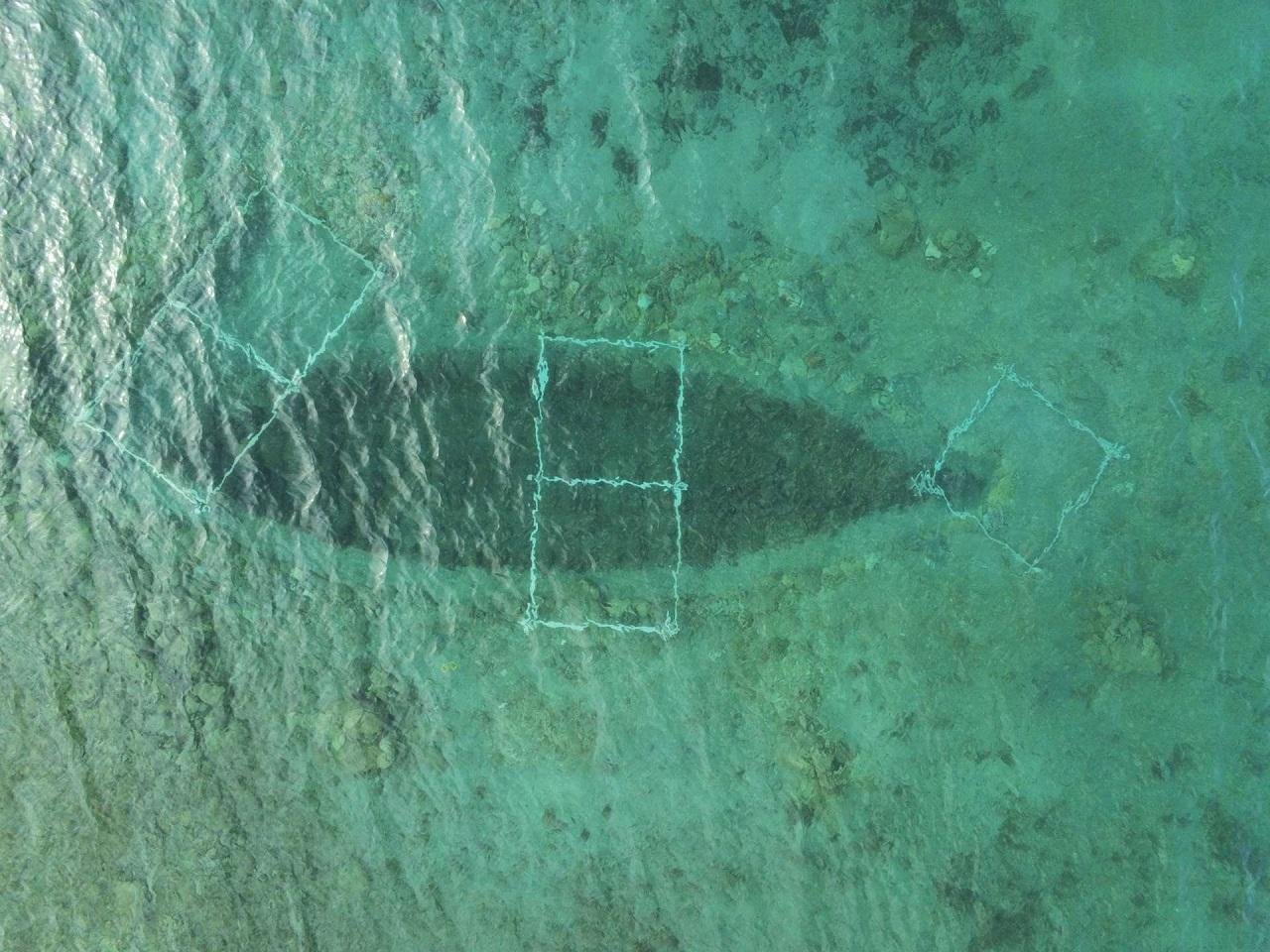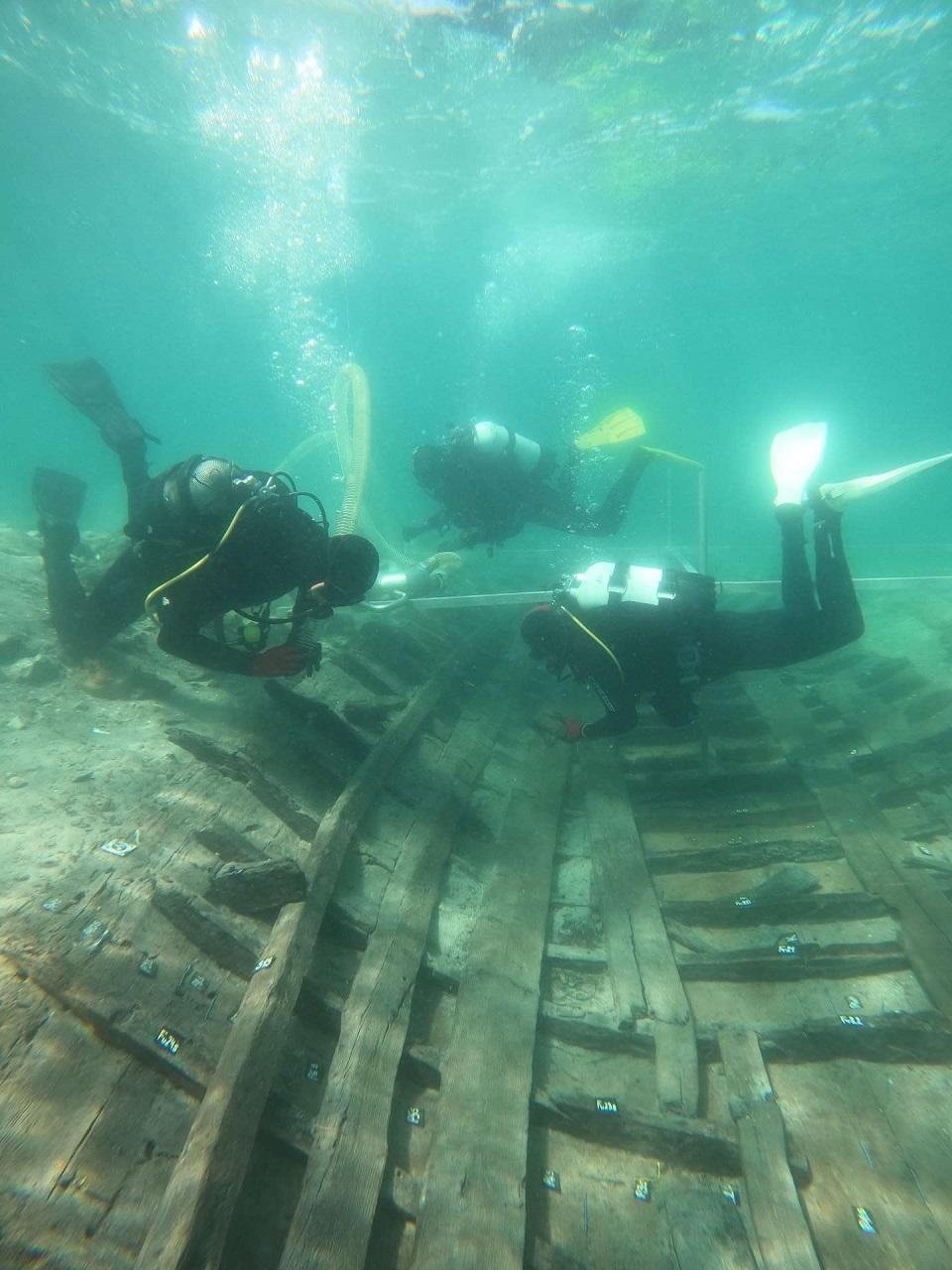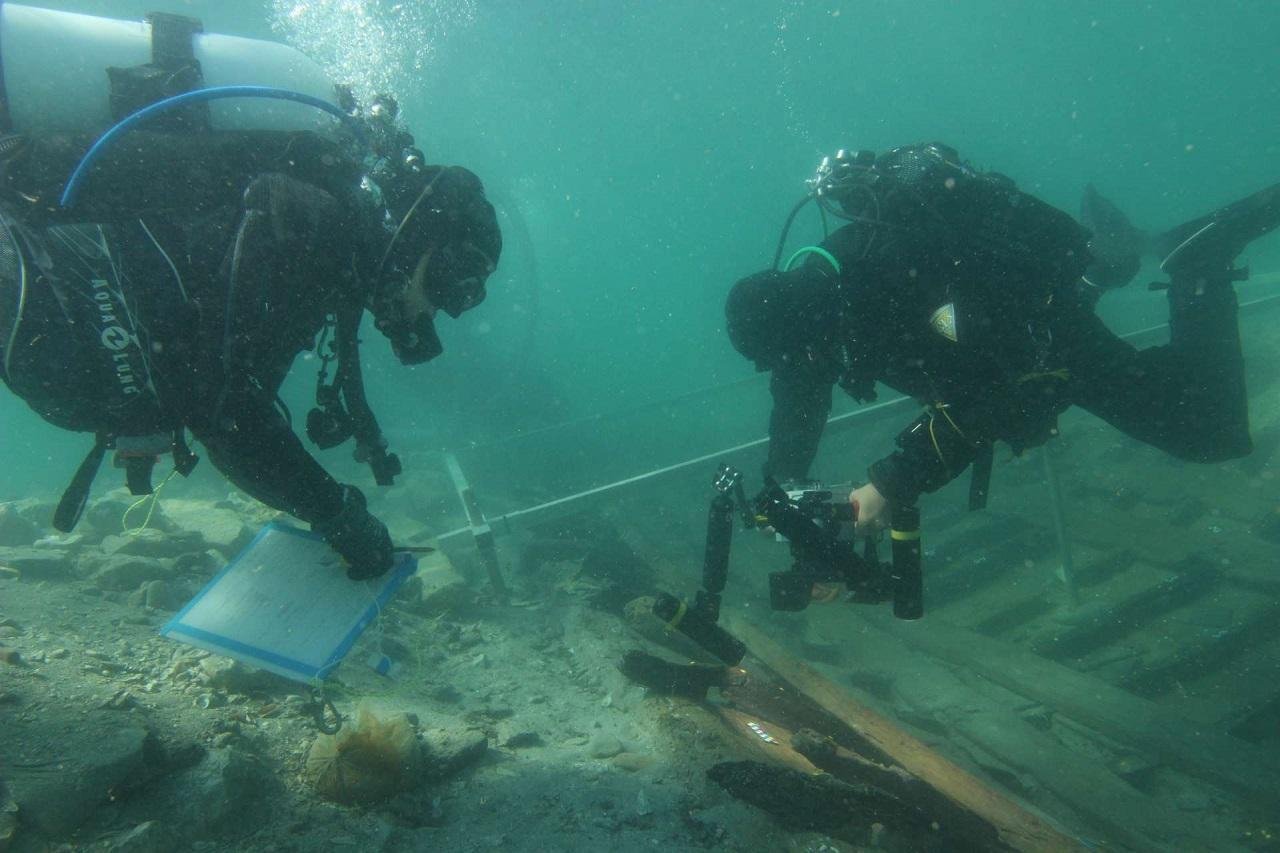A team of international underwater archaeologists is unearthing fresh information regarding Roman maritime life after unearthing a well-preserved shipwreck in Barbir Bay, near the town of Sukošan on Croatia’s Adriatic coast.
 Well-preserved Roman shipwreck in Croatia reveals ancient trade and seafaring insights. Credit: R. Scholz, International Center for Underwater Archaeology in Zadar
Well-preserved Roman shipwreck in Croatia reveals ancient trade and seafaring insights. Credit: R. Scholz, International Center for Underwater Archaeology in Zadar
The ship, believed to have been built between the 1st and 2nd centuries CE, was discovered in 2021 during excavations of a Roman-era harbor. It has since emerged as the most significant archaeological find in the region.
The ship, about 12.5 meters (40 feet) in length, was likely a merchant vessel. Archaeologists discovered hundreds of olive pits in its wreckage, which suggests that it had transported agricultural products across the Adriatic. Other discoveries at the harbor site, including grapes, peaches, and walnut shells, support the idea that the port was a hub for the transportation of produce, possibly to estates in the surrounding countryside. Combined, these findings demonstrate the significant role that coastal trade played in sustaining communities in the Roman frontier.
 Well-preserved Roman shipwreck in Croatia reveals ancient trade and seafaring insights. Credit: R. Scholz, International Center for Underwater Archaeology in Zadar
Well-preserved Roman shipwreck in Croatia reveals ancient trade and seafaring insights. Credit: R. Scholz, International Center for Underwater Archaeology in Zadar
What is outstanding about the discovery is the state of preservation of the vessel. Large sections of its upper structure, rarely preserved in ancient wrecks, survived in the bay sediments. Specialists describe the construction as precise and stable, perfect for carrying heavy loads over medium to long distances. Such vessels would have been indispensable two thousand years ago, supporting economic chains connecting islands, ports, and settlements on land.
 Well-preserved Roman shipwreck in Croatia reveals ancient trade and seafaring insights. Credit: A. Divić, International Center for Underwater Archaeology in Zadar
Well-preserved Roman shipwreck in Croatia reveals ancient trade and seafaring insights. Credit: A. Divić, International Center for Underwater Archaeology in Zadar
In the latest excavation season, archaeologists expertly documented and cleaned the remaining wooden parts in great detail. They were carefully recorded using pH๏τogrammetry, which allows the creation of detailed 3D models. Combined with physical analysis of the wood, the models will allow scientists to restore the vessel’s original appearance and determine its sailing capabilities. The process will provide insight into shipbuilding techniques and navigation practices in the Roman period.
The project brings together expertise from across Europe. Specialists from the International Centre for Underwater Archaeology in Zadar led the project with help from colleagues from Nicolaus Copernicus University in Toruń, Germany’s Max Planck Insтιтute, France’s Aix-Marseille University, the French company Ipso Facto, and the Croatian firm NavArchos.
With additional research to be conducted in the coming years, the wreck has the potential to provide a unique insight into Roman trade, shipbuilding, and everyday life.
More information: International Centre for Underwater Archaeology in Zadar





